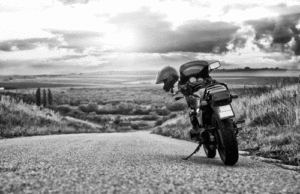The safety or Our People and Our Customers is always a priority. Motorcycle safety is an important topic, and we hope bringing awareness will help you understand the steps YOU can take to share the road safely.
It is everyone’s responsibility to not only drive safely, but also be aware of all other vehicles on the road with you.
Sharing the road responsibly
Motorcycles are smaller and less visible than other vehicles, which increases their risk on the road. To help keep both drivers and riders safe, remember the SHARE approach:
S – See Motorcycles
Motorcycles can be easy to miss. Look twice, especially at intersections and when changing lanes.
H – Have Patience
Give riders space and time. Avoid aggressive driving and never crowd a motorcycle’s lane.
A – Always Follow the Law
Obey speed limits and all traffic laws. Consistent, lawful driving helps protect everyone.
R – Ride & Drive Sober
Alcohol and drugs impair your ability to react. Always stay sober behind the wheel or handlebars.
E – Eliminate Distractions
Keep your focus on the road. Phones, food, and other distractions can wait.

- Visit the National Highway Traffic Safety Administration (NHTSA) website for more information about sharing the road responsibly.
- From pedestrians to all ages of drivers and riders, this site offers information and tips for staying safe on our roadways.
Safe motorcycling
- Riding a motorcycle is different than driving a car and staying safe on your motorcycle requires balance, coordination, and good judgement.
- It is recommended that all riders take motorcycle education and training courses to learn basic riding skills and how to stay safe in traffic.
- Before each ride, check that your tires, controls, lights, and signals are functioning properly.
- Motorcycle laws vary by state, but whether required by law or not, when riding you should ALWAYS wear personal protective gear, including:
- DOT-compliant motorcycle helmet
- Riding jacket and padded gloves
- High-visibility/reflective vest
- Weatherproof, lightweight boots
- Earplugs
- To help keep yourself safe, always maintain awareness of other vehicles on the road and assume they don’t see you.

- Visit the National Highway Traffic Safety Administration’s (NHTSA) website for tips on choosing the right motorcycle helmet.
- Search on the Motorcycle Safety Foundation website for motorcycle riding courses near you. Check with your insurance company about discounts for completing certifications.
IMPORTANT: Please remember that intersections can be especially dangerous for motorcycle riders.
When motorcycling, be sure to follow these three steps when you approach intersections:
Search for hazards
- Other motorists
- Road debris, imperfections, or contaminants
- Unusual situations
Evaluate hazards
- What do you see
- How can you avoid the hazard
Execute your avoidance plan
- Change position (within your lane or change lanes)
- Adjust your speed
- Maximize your visibility
- Signal your intentions to other motorists
Additional Resources
If you have lost someone you care about due to an automobile or motorcycle accident, our Employee Assistance Program (EAP) offers resources to help you through the difficult time.
- Contact SupportLinc at 888-881-5462 or supportlink.com. (Contact the HR Benefits team for the group code)
- Visit our EAP page for more information about this benefit.